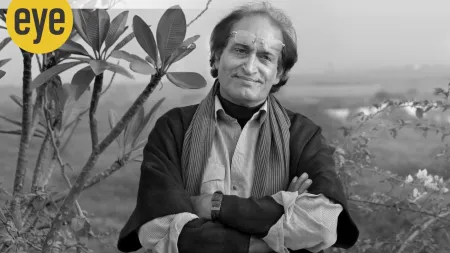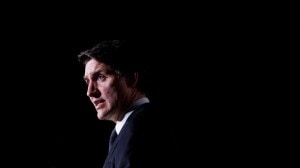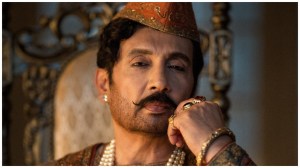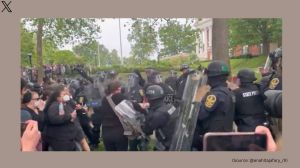- India
- International
10 yrs of Indo-US civil nuclear deal: Transformation of the bilateral relationship is the real big deal
In the decade since July 2005, India and the US haven’t done much nuclear business — but few could have predicted how far, and how fast, their broader engagement has moved since then
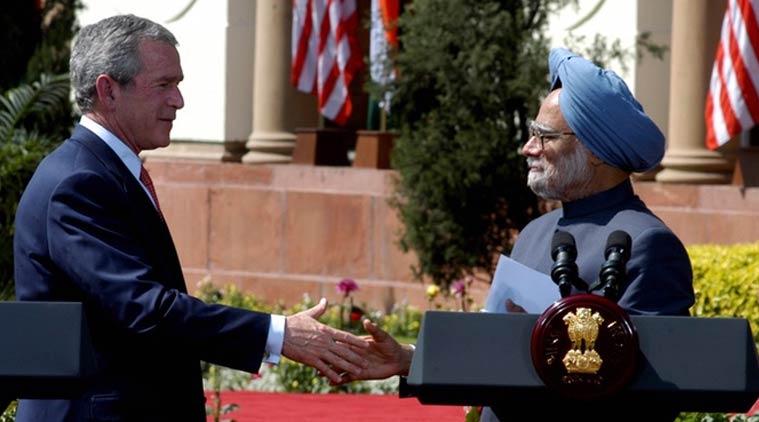 The essence of the deal was simple: the United States would give up trying to roll back India’s nuclear weapons programme and change its domestic law and tweak international rules to facilitate civil nuclear cooperation with Delhi. (Source: Reuters File photo)
The essence of the deal was simple: the United States would give up trying to roll back India’s nuclear weapons programme and change its domestic law and tweak international rules to facilitate civil nuclear cooperation with Delhi. (Source: Reuters File photo)
Exactly a decade after India and America signed the historic civil nuclear initiative, Delhi has not bought a single US atomic power reactor. That fact alone has given much ammunition to sceptics in India and America, who have long argued that the benefits of the nuclear deal were oversold in both countries.
The factoid on reactor sales, however, obscures the broader political objectives of the civil nuclear initiative and its significant impact on India’s international relations as well as its nuclear programme.
[related-post]
The real objective of the initiative was to end decades of alienation between the world’s largest democracies and build a genuine strategic partnership. Delhi and Washington knew that there could be no real partnership without resolving differences on non-proliferation that had so severely poisoned the bilateral relations from the early 1970s.
If India’s nuclear test in May 1974 angered America and invited ever expanding atomic sanctions on India, Prime Minister Atal Bihari Vajpayee seemed to queer the pitch once again when he conducted five nuclear tests in May 1998. Vajpayee, however, surprised Washington by coupling his nuclear defiance with the declaration that India and America were “natural allies”.
Vajpayee’s vision for restructuring India’s relations with America and the advent of the Bush Administration in Washington in January 2001 provided the basis for exploring a new approach to the nuclear dispute. Manmohan Singh, who succeeded Vajpayee in May 2004, seemed to share his predecessor’s passion for reinventing the American partnership. Intense negotiations before and during Dr Singh’s visit to the US in July 2005 produced the long-awaited nuclear breakthrough.

The essence of the deal was simple: the United States would give up trying to roll back India’s nuclear weapons programme and change its domestic law and tweak international rules to facilitate civil nuclear cooperation with Delhi. India, on its part, would separate its civilian and military nuclear programmes, put the former under international safeguards, and support the global non-proliferation regime.
This bold political deal inevitably produced a backlash in both countries. In America there was strong opposition to making an exception for India from the sacred rules of the non-proliferation regime. In Delhi, the opposition was even more intense.
The deep suspicion of America, accumulated over many decades, meant that many in the national security establishment and the political class were wary of the deal. If the nuclear initiative was about removing the main problem in bilateral relations, it also became the lightning rod for a vigorous expression of India’s scepticism about America’s intentions.
No foreign policy issue had generated so much heat since the war with China in 1962. The withdrawal of the left from the ruling coalition was followed by Dr Singh seeking a confidence vote in the Lok Sabha in 2008 that just about squeaked through. It took President Barack Obama’s visit to India in January 2015 to resolve many of the outstanding issues in implementing the deal.
Although the full potential of the civil nuclear initiative is yet to be realised, there is no denying the broader transformation of the bilateral relationship over the last decade. Few could predict how far and how fast the India-US engagement has moved since July 2005. Consider the following five developments over the last decade:
One, the US has removed many high technology sanctions imposed on India since 1974. If Delhi was prevented by law from importing anything for its nuclear programme over the last few decades, it is boosting atomic power generation in India through imported uranium and is negotiating with multiple vendors for purchase of new reactors.
Two, the US has become India’s largest trading partner in goods and services; and the two sides have set an ambitious goal of half a trillion dollars for future trade. The growing commercial engagement has been reinforced by an intensification of people-to-people contact and the presence of the 3 million strong Indian diaspora in America.
Three, cooperation on counter-terrorism and intelligence-sharing have expanded rapidly over the last decade. The US has become one of India’s major suppliers of arms, and the two sides are discussing ideas that would once have been dismissed as inconceivable — for example, US support in the development of India’s next generation aircraft carrier.
Four, in refusing to extend the civil nuclear initiative to Islamabad, Washington removed the hyphen in its relations with Delhi and Islamabad. Since 2005, America has also discarded the idea of mediating between India and Pakistan, especially on the Kashmir question.
Equally significant has been America’s decision to view India as a potential great power in the same league as China, assist in the expansion of India’s comprehensive national power, and encourage Delhi to play a larger role in stabilising the Asian balance of power.
Five, while traditional differences between Delhi and Washington on global issues have endured, the two sides are now avoiding confrontation in multilateral fora dealing with trade and climate change.
None of these developments would have been possible without the civil nuclear initiative that generated greater trust and provided the enabling environment for broadening the partnership. As India reflects on the decade of transformation in its relations with the US, it must also wonder how Delhi made such heavy weather of an agreement so patently in India’s favour.
There is no denying that political ambivalence and self-doubt in Delhi tended to slow down the pace and intensity of India’s engagement with America over the last decade. The Narendra Modi government has signalled greater self-confidence and pragmatism towards America than the UPA government and the BJP in opposition over the last decade.
While there will be no dearth of sceptics at home and no shortage of political wrinkles to be ironed out between the two countries, the next decade in India’s partnership with America could turn out to be a lot more consequential than the previous one.
c.rajamohan@expressindia.com
(The writer is a distinguished fellow at the Observer Research Foundation, Delhi, and a contributing editor for The Indian Express)
More Explained
EXPRESS OPINION
May 05: Latest News
- 01
- 02
- 03
- 04
- 05







